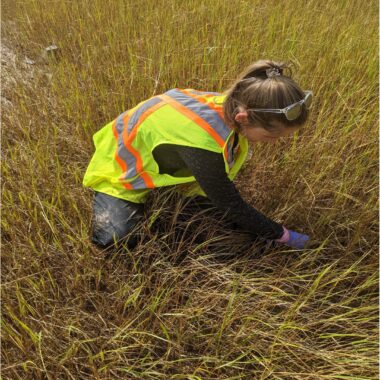
The Minas Basin is a part of the Bay of Fundy. It is east of the Minas Passage and runs to Truro, Nova Scotia. The Bay of Fundy is used for aquaculture, shipping, and fishing. As such, the Bay of Fundy has several large industries that act as point sources of contamination.
Mercury is a toxic compound that can negatively affect an organism’s health. In aquatic ecosystems, mercury is present in dissolved forms that can bind to particulates in the water column and settle to the sediment layers. As such, sediment dwelling invertebrates and filter feeders may be useful bioindicators. Coastal mussels attach to substrates and have very little movement, and filter large amounts of water during feeding, allowing for the accumulation of contaminants from specific regional surroundings.
Soft mussel tissue has been used as a chemical biomarker in several published studies, however, the use of mussel shells as a bioindicator is a relatively new concept. My honour’s project will examine the relationships between mercury and mussel soft tissue versus mussel shell. In addition, we will test to see if there is a correlation between mussel size, weight and mercury.
Josie Rogers is conducting this research as a honours student in Dr. Nelson O’Driscoll’s lab.


 Acadia University
Acadia University